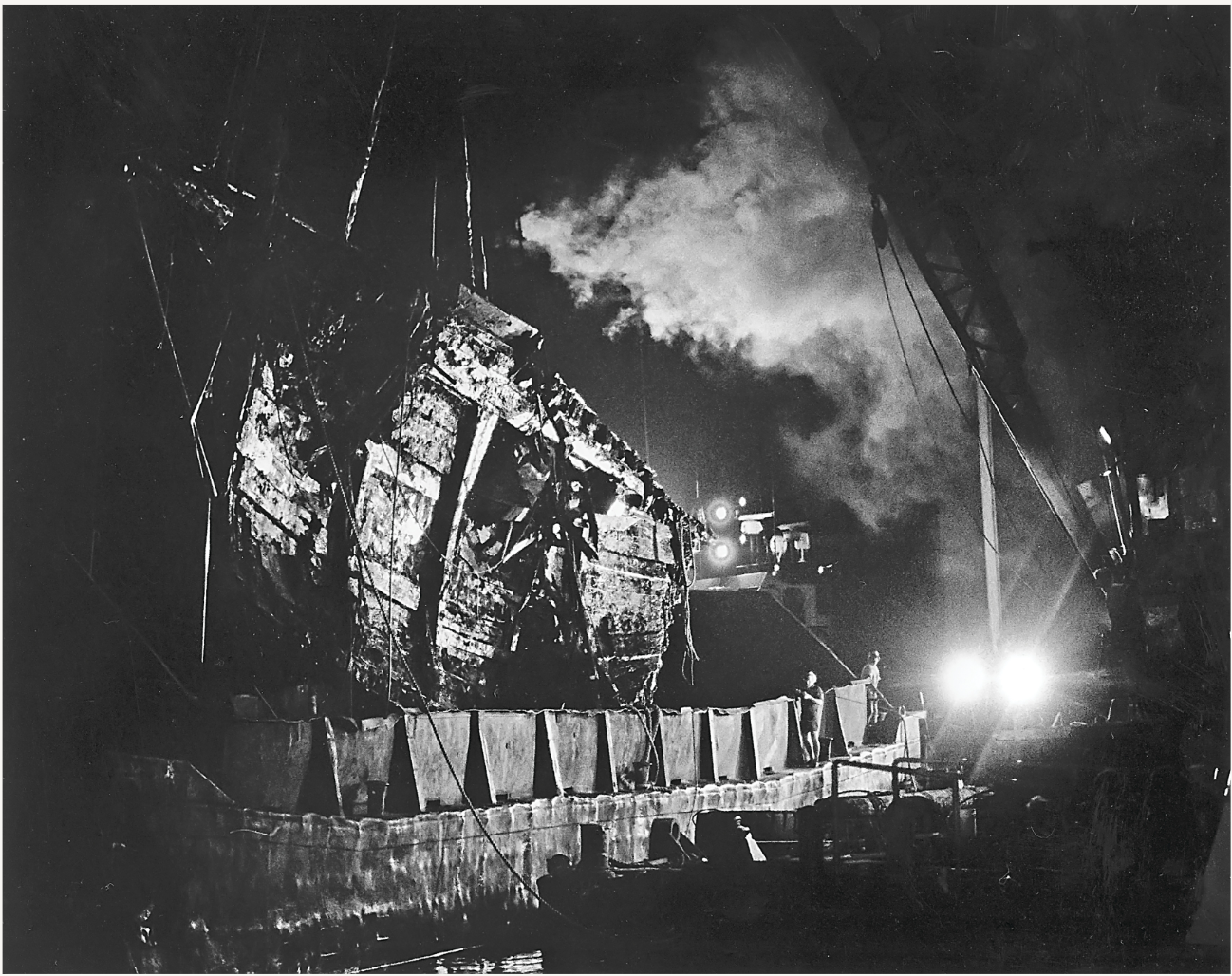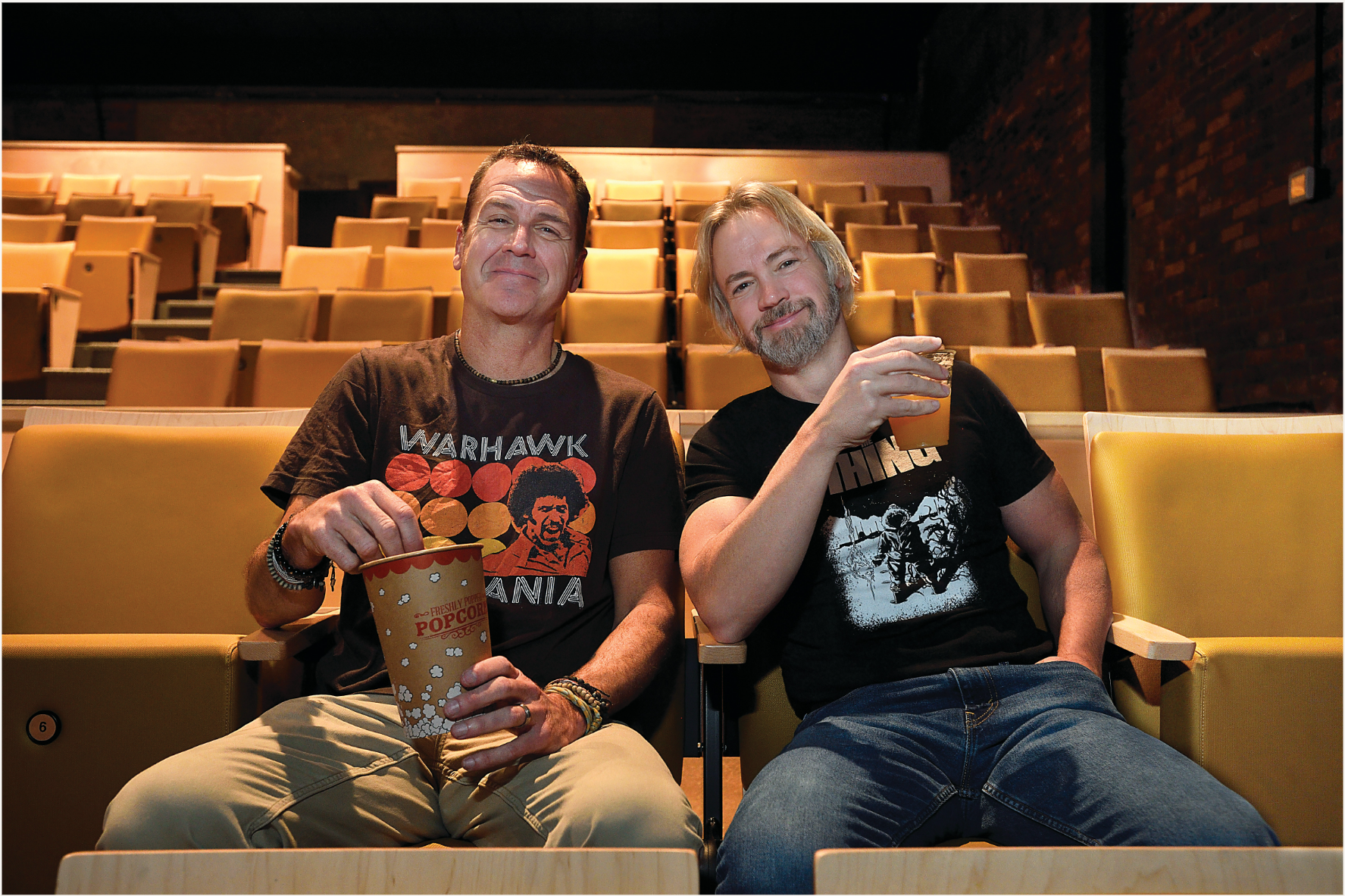Below the Waves
- Details
- Written by Kris Legates
Shipwrecks abound along the coast of Delaware
By Pam George
Photograph by Marc Clery
From the May 2024 issue

It’s a typical sunny day, and beachgoers are taking a leisurely walk on the sand or, if the water is warm enough, splashing in the surf. It’s a peaceful, lighthearted scene. But unknown to many, the sparkling waves hide gloomy graves in the distance — or even beneath one’s feet. There are more than 2,400 wrecks in the waters around the Delmarva Peninsula, according to the National Geographic Society’s “Shipwrecks of Delmarva” map.
If the number surprises you, consider the presence of the two lighthouses on the breakwaters off Lewes as well as the Indian River Life-Saving Station (now a museum), all built in response to seagoing casualties in the 18th and 19th centuries.
Revival House Robs
- Details
- Written by Kris Legates
Meet two film fanatics who share a first name and an inexhaustible love for cinema
By Bill Newcott
Photograph by Scott Nathan
From the May 2024 issue

The two Robs had a dream. “We wanted to create a religious experience for film nerds,” says Rob Waters.
“Yeah,” adds Rob Rector. “Not just watching movies, you know. A communal experience.”
For the past eight years, like Cary Grant and Eva Marie Saint hanging from Mount Rushmore in “North by Northwest,” the two friends have clung to that movie lovers’ vision. They’ve screened obscure cult classics — to full houses and nearly empty ones — at the Milton Theatre. They’ve braved the perils of COVID-19 to present open-air screenings at Hudson Fields. And they’ve put local filmmakers through their paces with their annual Horror Trailer Challenge.
The Cornfield’s Past Lives
- Details
- Written by Kris Legates
A parked truck is just the latest witness to our region’s endless development
By Bill Newcott
Illustration by Rob Waters
From the April 2024 issue

The source of the melancholy that sweeps over me as I make the turn off Cedar Grove Road onto Mulberry Knoll, near Lewes, is at once obvious and elusive.
At the southwest corner spreads a cornfield — at least, as of this writing. It is midsummer: a time of growth, green and hopeful, the stalks topping out just at eye level. Far, far in the distance, a stand of trees marks the field’s western boundary; a here-and-no-further wall that has, perhaps for a century or so, defined the demarcation between agriculture and nature’s last stand.
And there, parked diagonally near the intersection, is an old Chevy panel truck, lovingly maintained yet defiantly utilitarian. “247 Single Family Lots For Sale,” a sign on the truck proclaims.
Vacation Paths Less Traveled
- Details
- Written by Kris Legates
By Lynn R. Parks
Photo courtesy of Kathleen Schell
From the April 2024 issue

Preston Schell’s 40th birthday was approaching and he and his wife, Kathleen, were trying to figure out how to celebrate. The Rehoboth-area couple — he is co-founder and president of the Ocean Atlantic Companies, a group of land development and real estate firms; she is co-owner of one of those companies, Monument Sotheby’s International Realty — were tired of the typical vacations they had taken and were looking for something unique.
“We’d been going on trips that were oriented toward relaxing, eating and drinking, and we said, ‘Let’s do something more adventuresome, a little more active,” Kathleen recalls.
At Ease
- Details
- Written by Kris Legates
For the men stationed at Fort Miles during World War II, recreation activities were abundant
By Michael Morgan
Photograph by Delaware Public Archive
From the April 2024 issue

“Just one year ago,” Delaware Coast News columnist Virginia Cullen wrote in May 1942, “the silent, saffron slopes of Cape Henlopen were known only to the wind and the tides; to a few straggling fishermen casting in the thundering surf. Where leisurely picnickers basked under the soporific sun. Where berry pickers for the sleepy little town of Lewes gathered wild plums and cranberries in the spring.” But since then, with World War II underway in Europe and the clouds of that conflict drifting across the Atlantic, construction crews had invaded the peaceful sands of Cape Henlopen to begin work on Fort Miles, which would become one of the most modern military installations on the East Coast. Eventually, massive concrete gun emplacements, bunkers and the ubiquitous spotting towers were built on the sands of the cape.
Sprinkled among these instruments of war, however, were tennis courts, a baseball diamond and other recreational facilities for the more than 2,000 men garrisoned at the fort.



